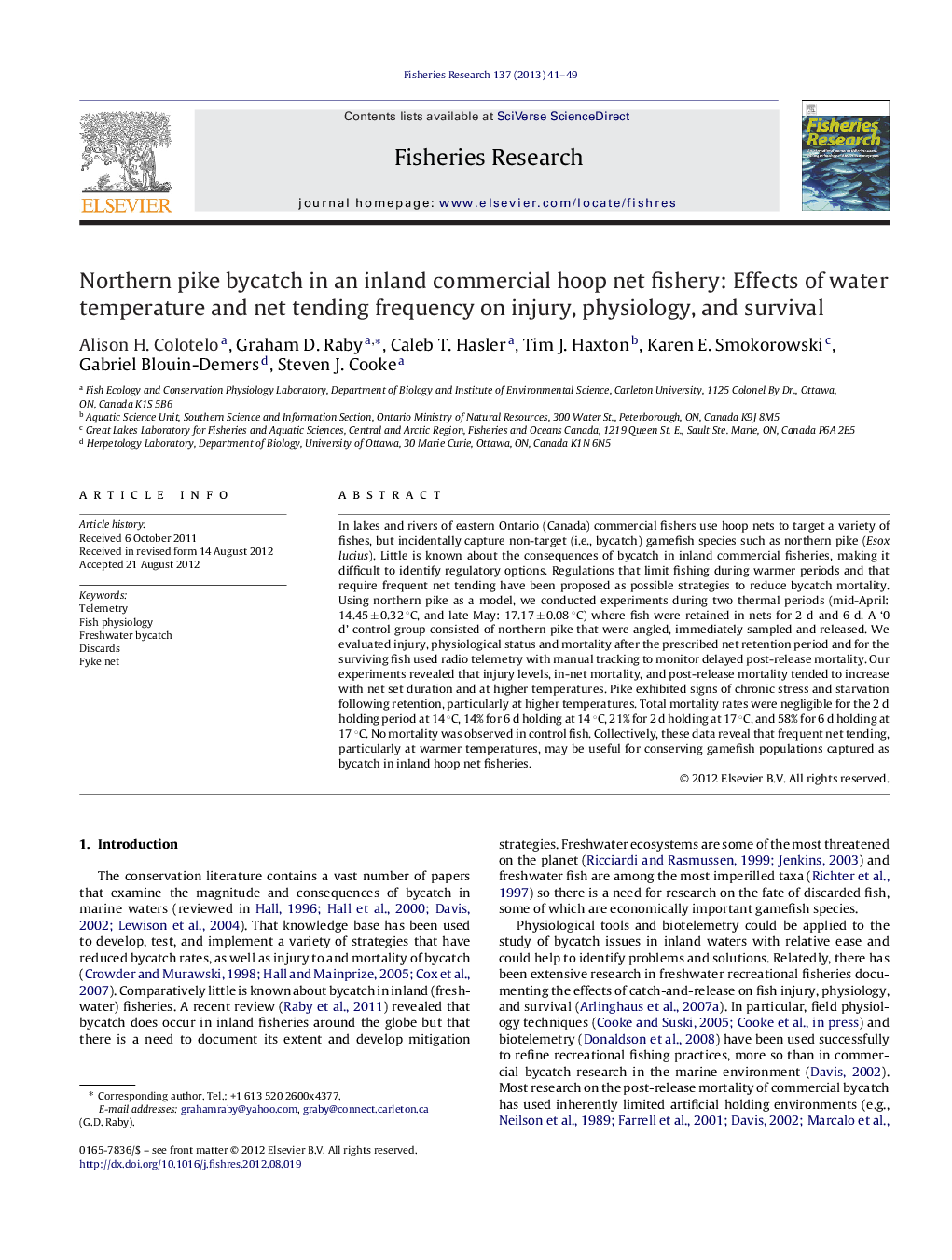| Article ID | Journal | Published Year | Pages | File Type |
|---|---|---|---|---|
| 4543297 | Fisheries Research | 2013 | 9 Pages |
In lakes and rivers of eastern Ontario (Canada) commercial fishers use hoop nets to target a variety of fishes, but incidentally capture non-target (i.e., bycatch) gamefish species such as northern pike (Esox lucius). Little is known about the consequences of bycatch in inland commercial fisheries, making it difficult to identify regulatory options. Regulations that limit fishing during warmer periods and that require frequent net tending have been proposed as possible strategies to reduce bycatch mortality. Using northern pike as a model, we conducted experiments during two thermal periods (mid-April: 14.45 ± 0.32 °C, and late May: 17.17 ± 0.08 °C) where fish were retained in nets for 2 d and 6 d. A ‘0 d’ control group consisted of northern pike that were angled, immediately sampled and released. We evaluated injury, physiological status and mortality after the prescribed net retention period and for the surviving fish used radio telemetry with manual tracking to monitor delayed post-release mortality. Our experiments revealed that injury levels, in-net mortality, and post-release mortality tended to increase with net set duration and at higher temperatures. Pike exhibited signs of chronic stress and starvation following retention, particularly at higher temperatures. Total mortality rates were negligible for the 2 d holding period at 14 °C, 14% for 6 d holding at 14 °C, 21% for 2 d holding at 17 °C, and 58% for 6 d holding at 17 °C. No mortality was observed in control fish. Collectively, these data reveal that frequent net tending, particularly at warmer temperatures, may be useful for conserving gamefish populations captured as bycatch in inland hoop net fisheries.
► Injury, stress, and mortality evaluated for northern pike bycatch in trap nets. ► Injury levels and mortality influenced by temperature and duration in net. ► Physiological evidence of starvation at higher temperatures. ► Frequent net tending especially at higher temperatures is recommended.
